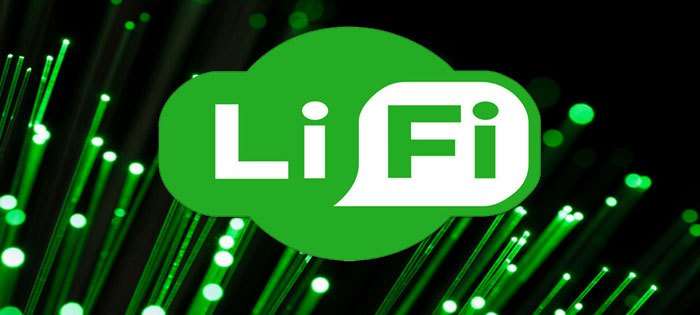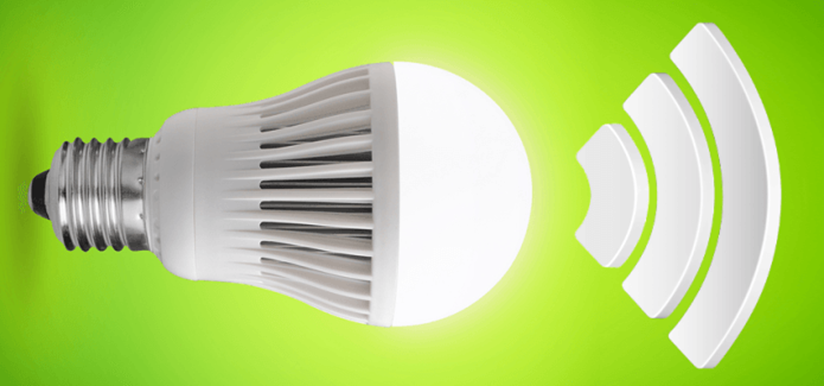
Forget Wi-Fi, Here Comes ‘LiFi’ With 100 times Faster Speed Than Wi-Fi !
Internet plays a crucial role in every individual’s life as it assists in the best way to handle all your tasks with great ease. With the rapid usage of internet, there is much advancement in the technology which led to the development of wireless internet which is nothing but, Wi-Fi. These days, people are highly accustomed to this wireless technology as it helps us to complete any of the hectic tasks within no time just through a single connectivity. But, sometimes we do face some issues regarding the Wi-Fi signal strength that might consistently drop due to slow speeds. In such a case, it is really tough to complete our work in time.

Now, you no more have to worry about all these issues. Just forget Wi-Fi as a new wireless internet technology has come up called LiFi that could provide high data transfer speeds that are 100 times faster than the traditional Wi-Fi. LiFi is a new wireless technology which is used to transmit high-speed data, was first invented in Scotland by scientist Harald Haas. The scientist had earlier demonstrated the LiFi technology by flickering an LED light at extremely high speeds so that one can transmit more data than a cellular tower in a faster and easier way.
LiFi – New Wireless Internet Technology
LiFi is a new wireless internet technology which can be used to transfer data at extremely high speed, i.e., almost 100 times faster than the current Wi-Fi technology. Professor Harald Haas, from the University of Edinburgh, pioneered the technology and coined the term LiFi in 2011, but this is the first time it’s been used in a ‘real world’ setting. Earlier, scientists have tested LiFi in their labs and also achieved speeds upto 224 GB/s. Now, for the first time since the inception of this new technology in 2011, many times LiFi has experimented outside a lab situation. All the tests indicated that sooner the technology may be available for consumer usage as expected.

Currently, LiFi is being tested by an Estonian start-up called Velmenni, who are now testing it in offices and other industrial work environments in Tallinn. During the tests, LiFi has proved that it is capable of transferring data at a very high speeds of up to 1GBps, almost 100 times faster than the current Wi-Fi connections. Estonia is one of the world’s most tech-savvy country.
Professor Harald Hass said, “All we need to do is fit a small microchip to every potential illumination device and this would then combine two basic functionalities: illumination and wireless data transmission.”
“In the future we will not only have 14 billion light bulbs, we may have 14 billion LiFis deployed worldwide for a cleaner, greener and even brighter future,” he added.
How does LiFi technology work?
LiFi uses a technology based on light called VLC which means, Visible Light Communication. Data can be transmitted with high speed using VLC where the data is sent between networks by LED lights that flicker incredibly fast at extreme speeds. LiFi gets connected to other devices in a code which are generated by LED lights going on and off at a really high speed. The reach of this technology is limited to particular space it covers. This is because, light cannot penetrate through walls, thereby the network is highly secure when used in an enclosed environment. So that, it would be very tough for the hackers to hack your network.
Advantages of LiFi
- Best Alternative for Wi-Fi as it cuts down the usage of Radio and Microwave frequencies.
- Highly secure for people those who work in an enclosed environment.
- LiFi is more sustainable without any issues like frequency congestion and interference.
- You can download albums, high-definition films, and even video games at high speeds within a matter of seconds.
- With increased speeds, it is a big enhancement on current technology which will be very much useful for some applications.
Limitations of LiFi
This technology has a major limitation that is, it totally works on VLC so that it relies on visible light to work which cannot pass through walls. Due to its limitations, it would be feasible to run in correspondence with existing technology (Wi-Fi) in order to increase a network’s speed and efficiency.
Deepak Solanki, CEO of Velmenni, said that the technology could be rolled out to consumers within the next three to four years. As mentioned already, it must be noted that the Li-Fi technology might not completely replace the existing Wi-Fi technology as shredding off all the current Wi-Fi infrastructure which doesn’t look very conservative. However, LiFi can be used to counterpart Wi-Fi as a parallel network.